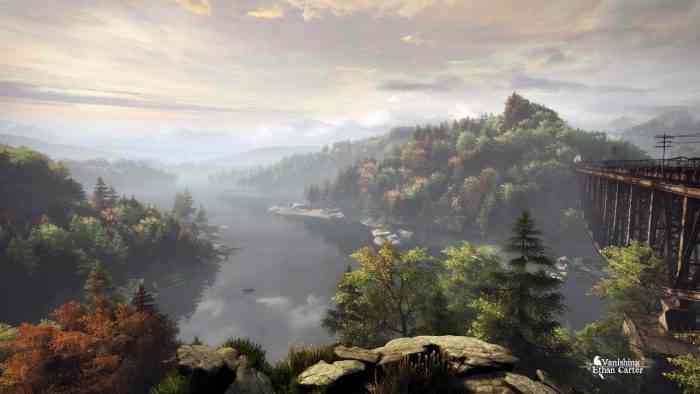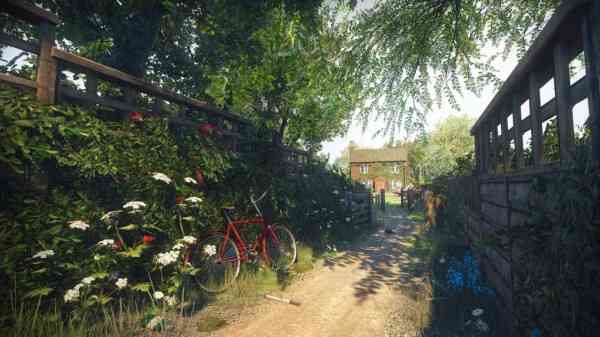Top 10 Walking Simulators
We have a hard time accepting new things.
Instinctively, we push back against the ‘new’, against anything that exists outside a category we’re familiar with. This is psychology, not opinion. Sticking with what we know helps us perform “eliminations by alternatives,” which is a fancy way of saying we to limit our own choices by sticking with what we believe is most important to us[1][2]. Something new and untested? Not worth the risk.
With that in mind, it’s not too surprising one of the newest genres of game has had difficulty establishing the respect it deserves. I’m talking about Walking Simulators. Even the name is derisive, intended by its coiners as an insult, but adopted by its fans because honestly, what else are we going to call it? With little violence, light-if-any puzzles, and an emphasis on story and character over action, we can’t slot these games into one of our established boxes. Action? Nope. Adventure? Kind of, but is exploring your house in the Pacific Northwest really an adventure? Strategy? Okay, now we’re just being silly. Their detractors accuse them of not even being games.
If walking simulators don’t do action or adventure or strategy as well as games built in those genres, then what do walking simulators do?
A lot, actually. They teach us empathy, letting us inhabit the life of someone unlike us. They usually present themselves in a highly artistic way. They tell us an awesome story. If you’re new to the genre, and you’re open-minded, we have some suggestions on where to start. Here are our Top 10 Walking Simulators to help you break into this compelling new genre.

10 – Soma
Soma is probably the most “game-y” of all the games in this list — it’s sometimes billed as a first-person survival horror game. And while that’s certainly true, it’s included here because, unlike your Resident Evils and Silent Hills, in Soma, you are completely helpless. There is no combat because you wouldn’t stand a chance against the creatures that are stalking you anyway.
What begins as a seemingly realistic, modern-day exploration of a character named Simon Jarrett suddenly turns into future sci-fi horror in a station deep under the ocean. As usual in these sorts of games, Something Has Gone Wrong, and it’s up to you to get to the bottom of it, hopefully saving your own life in the process. The atmosphere is thick with tension, and though there are a few points where you might die over and over as you attempt to figure things out, it’s worthwhile seeing it through to the end.

9 – Everybody’s Gone to the Rapture
Here’s where the “walking simulators aren’t games” crowd really get fired up. “A game where you wander the English countryside, through abandoned homes and fields, watching ghosts put on mini-dramas and chasing a magic ball of energy around? That’s a game?” Well, yes, it is.
Everybody’s Gone to the Rapture is the latest game by The Chinese Room, a developer who previously worked on Amnesia: A Machine for Pigs and another game on this list, Dear Esther. They specialize in non-violent, atmospheric pieces that closely introduce you to a place and tell you a compelling story in it, often in very non-traditional ways. This is a science fiction tale of an experiment gone horribly wrong, and the way it’s told is fascinating. You won’t encounter any other characters; you won’t be asked to make dialogue choices or have decisions rated by a morality meter. Instead, you witness the plot unfold in small scenes, played out by light-based facsimiles of the people who lived in this town. It’s bizarre to develop an emotional attachment to characters you only see in light form, but it’s effective. Also, this game is beautiful. Taking in the sights would be reason enough to finish a playthrough, even without the story to pull you along.
By expanding our definition of “game” to include experiences that don’t involve first-person shooting or platform jumping, we are actually doing ourselves a service. Give it a chance, and let it impress you.

8 – The Unfinished Swan
Another game where there’s more to do than simply walk and see, The Unfinished Swan deftly uses metaphor to explore a story of love and loss. The story follows a young boy named Monroe who recently lost his parents. His mother was a painter who had a habit of never finishing her works. One such painting, a swan, is the only item Monroe is allowed to bring with him to the orphanage. That first night, as Monroe goes to bed, the swan escapes from the painting, and Monroe has to follow it. Dropped into a completely white, seemingly empty world, he is given the ability to shoot paint. Whatever objects he shoots become visible, and covering the world allows him to see his way around.
New levels introduce new mechanics, and the way in which each is used builds off your knowledge of all previous levels. It really is brilliant game design. The Unfinished Swan is one of the first and most notable explorations of “abstract art” in video game form, and it’s worth your time.

Click on thru to page two to continue our list…
[1] http://www.psychologyofgames.com/2010/02/why-do-we-love-genres-so-much/#foot_text_272_3
[2] https://www.nytimes.com/2016/05/29/opinion/sunday/the-psychology-of-genre.html
